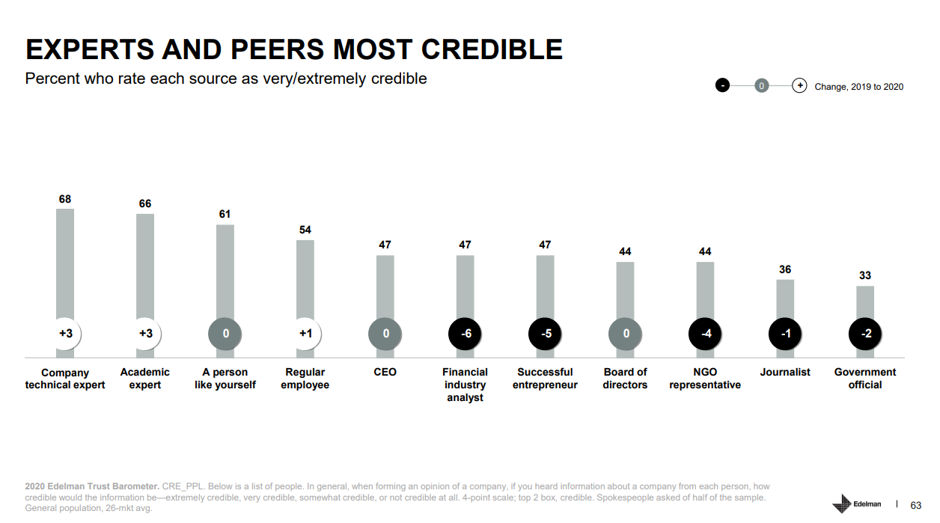What makes a good employee advocate? Status? Seniority? Technical expertise? Attitude? Social media know-how? For anyone leading a new employee advocacy program, you need to know how to spot potential stars and bring them into the fold.
What Is Employee Advocacy And Why It’s A No-Brainer
Before we dive into the ideal advocate, let’s rewind and focus in on what advocacy is and why it matters. Employee Advocacy is generally defined as the promotion of an organisation by its staff members.
As social media usage continues to grow, many businesses are tapping into employees to spread brand messages – about products, services, company culture, events, vacancies, etc.
Anything an organisation wants to shout about can be amplified through its workforce. With a mountain of evidence on the benefits of a strong advocacy program - employee advocacy is a no-brainer.
- An employee advocacy program costs 1/10 of paid advertising. – Everyone Social
- 79% of job applicants use social media in their job search. – Glassdoor
- According to IBM, when a lead is generated through social selling or employee advocacy that lead is 7X more likely to close compared to other lead gen tactics. – Gartner
- Brand messages reached 561% further when shared by employees vs the same messages shared via official brand social channels – MSL Group
.png?width=1200&name=LinkedIn%20Post%20Images%20(14).png)
The Real Power In Activating ‘Regular Employees’
However, the real power and potential of employee advocacy is trust. People trust people like themselves, regular employees, technical and academic experts. Combining who we deem trustworthy and society’s overall declining levels of trust, it’s clear – if your business isn’t investing in advocacy, you’re missing a trick.

Source: 2020 Edelman Trust Barometer
Of course, to reap the benefits of employee advocacy, you must have buy-in and participation from your colleagues. You may even need to cherry-pick a few champions to start a program or re-launch one. Here’s how to spot them.
Characteristics Of An Ideal Employee Advocate:
1. Engaged in your organisation: Bottom line, someone who isn’t engaged in their role or the workplace, isn’t going to want to participate in an advocacy program. As Jay Baer says, "If your employees aren't your biggest fans, you've got problems WAY bigger than social media".
2. Has internal influence: This isn’t about job role or seniority. This is essentially, the ‘popular kids’ at your office. You know who they are – the people who are friendly, respected, well-liked and have a strong internal network. If they’re on board for your advocacy program, others will follow.
3. Exhibits some social media know-how: Being active on social media is a skill that can be taught. This is important to note because confidence is often a barrier for employees being active on social platforms like LinkedIn. Any successful advocacy program comes with on-going training and support. Expert level social know-how isn’t a requirement for newbies joining your programme, but it helps if they have basic knowledge.
4. Displays a growth-mindset: Your colleagues with a growth mindset are likely to prioritise personal and professional development, love challenging projects and give thoughtful feedback. Your advocacy stars with growth-mindset are going to help you improve your program and share their social journey with others internally.
5. Actively a team-player: These are yes-people in a sense that when volunteers are needed, they say yes. 'Employee Advocacy is a team sport - it takes a collective group of employees all sharing content together to harness the full potential of a program.' Find your people who want to play a part.
.png?width=1200&name=LinkedIn%20Post%20Images%20(15).png)
Your social media stars may not display all of the above characteristics, but they’ll likely display a few. Depending on the size of your organisation, you may know them personally. In larger organisations, you may not, so I’d start with a call-out for volunteers.
Here’s what Smarp CEO said on the subject, "We've seen companies start with large amounts of people, and we've seen companies start small. Both of those have their ups and downs, but the key thing in both of them is that it has to be completely voluntary participation." The best advocates are those who want to be there and choose to participate.
When building your Employee Advocacy dream team, keep leadership and diversity in mind. Be sure that you have an executive sponsor or two – leaders need to show that advocacy is important to the health and future of the business. Bring in colleagues across departments so that advocacy is viewed as beneficial beyond sales, marketing and communications – aim to activate at least one internal expert in every department.
Leading an advocacy program is exciting and rewarding, however, not everyone will be an advocate. And to keep your energy and enthusiasm alive, you must remember that’s okay.
.png?width=1200&name=Blog%20Header%20Images%20(17).png)

